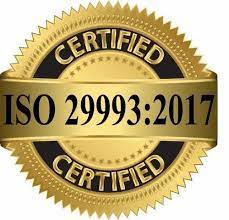
|
|
The Postwar Economy: 1945-1960 Many Americans feared that the end of World War II and the subsequent drop in military spending might bring back the hard times of the Great Depression. But instead, pent-up consumer demand fueled exceptionally strong economic growth in the postwar period. The automobile industry successfully converted back to producing cars, and new industries such as aviation and electronics grew by leaps and bounds. A housing boom, stimulated in part by easily affordable mortgages for returning members of the military, added to the expansion. The nation's gross national product rose from about $200,000 million in 1940 to $300,000 million in 1950 and to more than $500,000 million in 1960. At the same time, the jump in postwar births, known as the "baby boom," increased the number of consumers. More and more Americans joined the middle class. The need to produce war supplies had given rise to a huge military-industrial complex (a term coined by Dwight D. Eisenhower, who served as the U.S. president from 1953 through 1961). It did not disappear with the war's end.
As the Iron Curtain descended
across Europe and the United States found itself embroiled in a cold war with the Soviet Union, the government
maintained substantial fighting capacity and invested in sophisticated weapons such as the hydrogen bomb.
Economic aid flowed to war-ravaged European countries under the Marshall Plan, which also helped maintain
markets for numerous U.S. goods. And the government itself recognized its central role in economic affairs. The
Employment Act of 1946 stated as government policy "to promote maximum employment, production, and purchasing
power." Business, meanwhile, entered a period marked by consolidation. Firms merged to create huge, diversified conglomerates. International Telephone and Telegraph, for instance, bought Sheraton Hotels, Continental Banking, Hartford Fire Insurance, Avis Rent-a-Car, and other companies. The American work force also changed significantly. During the 1950s, the number of workers providing services grew until it equaled and then surpassed the number who produced goods. And by 1956, a majority of U.S. workers held white-collar rather than blue-collar jobs. At the same time, labor unions won long-term employment contracts and other benefits for their members. Farmers, on the other hand, faced tough times. Gains in productivity led to agricultural overproduction, as farming became a big business. Small family farms found it increasingly difficult to compete, and more and more farmers left the land. As a result, the number of people employed in the farm sector, which in 1947 stood at 7.9 million, began a continuing decline; by 1998, U.S. farms employed only 3.4 million people.
|
|
|
|
|
|
|
|
|
"We now accept the fact that learning is a lifelong process of keeping abreast of change. And the most pressing task is to teach people how to learn." -- Dr. Peter Drucker, Austrian-born American management consultant, educator
|
Home Home Certifications AMC® Training Council Continuing Ed Awards Careers Board Government Jobs Membership Ethics Handbook Events Benefits Exam Sample Omicron Chi News Accredited Degrees Management Degrees Accounting Degrees Financial Analyst Degrees Human Resource Degrees Application Links Disclaimer


